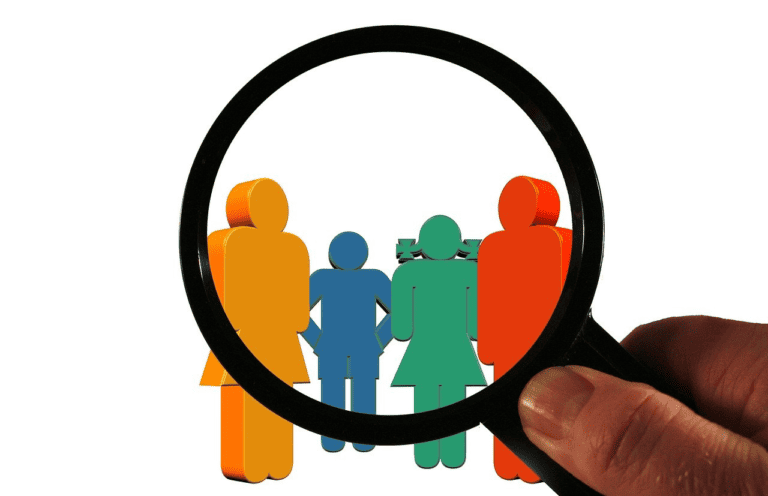Building Resilience: Lessons from Sustainable Business Practices
The world is facing increasing disruptions, ranging from wars and pandemics to climate change. To address these challenges, the World Economic Forum has launched the Resilience Consortium, bringing together leaders from the public and private sectors to build resilience globally. Resilience is more than just recovering quickly from disruptions; it is about adapting, innovating, and thriving in the face of adversity. Lessons from past crises can guide organizations in developing sustainable business practices that contribute to resilience and long-term success.
Key Takeaways:
- Building resilience is essential in a rapidly changing world.
- The World Economic Forum’s Resilience Consortium aims to foster global resilience.
- Sustainable business practices contribute to resilience and long-term success.
- Lessons from past crises can guide organizations in developing effective strategies.
- Adapting, innovating, and thriving in adversity are key aspects of resilience.
The Importance of Managing Disruptions for Sustainable Growth
Managing disruptions is crucial for driving sustainable growth. Organizations that are able to effectively navigate and respond to disruptions have the opportunity to build stronger foundations for future growth. In particular, the financial crisis of the late-2000s highlighted the importance of rebuilding and reinventing in order to create a more resilient and sustainable business.
Resilient organizations go beyond simply implementing protective measures; they actively respond to disruptions and innovate in response to changing circumstances. This proactive approach allows them to not only survive but also thrive in the face of adversity.
Lessons from past crises, such as the financial crisis, provide valuable insights that can inform strategies for managing disruptions and driving sustainable growth. By studying the actions and strategies employed during these challenging times, organizations can identify effective resilience strategies that can be applied to future disruptions.
“The only way to deal with disruptions is to embrace change, be adaptive, and find innovative solutions that not only resolve the immediate crisis but also sustain long-term growth.” – Katherine Nguyen, CEO of Resilience Strategies Inc.
By effectively managing disruptions and developing resilience strategies, organizations can create a solid foundation for sustainable growth. This involves continuously adapting and innovating to overcome challenges and seize opportunities. With a focus on resilience, organizations can not only survive disruptions but also position themselves for long-term success.
The Evolution of Crises and the Need for Correlated Solutions
Crises are not confined to rigid categories and can evolve across different areas, with initial effects leading to secondary and tertiary consequences. The COVID-19 pandemic is a prime example of how a public-health crisis quickly evolved into an economic, social, and organizational crisis.
To navigate these complex interactions, organizations need to respond with correlated solutions that can adapt as conditions change. Understanding the interconnected nature of crises is essential for building resilience and preparing for future disruptions.
The evolving nature of crises requires a holistic approach that considers the interplay between social, economic, and organizational dimensions. For example, the COVID-19 pandemic initially posed significant health risks, which prompted governments to implement strict containment measures, such as lockdowns and travel restrictions. While these measures were necessary for public safety, they also resulted in severe economic disruptions, including job losses, business closures, and supply chain interruptions.
“The COVID-19 pandemic has demonstrated how crises can quickly transcend their initial boundaries and impact various aspects of society,” says Dr. Maria Ramirez, a crisis management expert. “To effectively address these evolving crises, organizations must adopt correlated solutions that address the interconnected challenges.”
Organizations that recognized the multidimensional impact of the pandemic and implemented correlated solutions were better equipped to navigate the crisis. For example, some companies quickly shifted their operations to produce essential medical supplies or pivoted their business models to adapt to the changing consumer behavior in a socially distanced world. By diversifying their revenue streams and investing in digital transformation, these organizations were able to mitigate the economic fallout and remain resilient amidst the crisis.
In summary, the evolution of crises demands a proactive and integrated approach to developing solutions. Organizations must recognize the interconnectedness of different dimensions and adapt their strategies accordingly. By embracing correlated solutions, businesses can build resilience and effectively navigate the complex landscape of evolving crises like the COVID-19 pandemic.
The Role of Networks in Accelerating Crises and Enabling Recovery
In times of crisis, global networks play a dual role – they can both accelerate the impact of disruptions and facilitate faster recovery. Hidden interdependencies within networks can unexpectedly amplify the effects of crises, especially when it comes to supply chain disruptions. Such disruptions can have far-reaching consequences, affecting production and the availability of essential goods and services.
However, networks that are flexible and reduce interdependencies can also be a source of resilience. By embracing adaptability and fostering innovation, networks can contribute to faster recovery and the emergence of novel solutions.
To understand the role of networks in crises, it is vital to recognize and mitigate hidden interdependencies that may exacerbate disruptions. By identifying vulnerabilities within the network and enhancing resilience at every level, organizations can effectively navigate crises and bounce back stronger.
Hidden interdependencies within networks can unexpectedly amplify the impact of disruptions, such as supply chain disruptions affecting production and availability.
| Networks in Crises | Supply Chain Disruptions | Resilience in Networks |
|---|---|---|
| Accelerate crises | Impact production and availability | Enable faster recovery |
| Highlight hidden interdependencies | Mitigate vulnerabilities | Foster innovation |
| Understand role in building resilience | Navigate disruptions effectively | Bounce back stronger |
Building resilience in networks requires collaboration, communication, and strategic decision-making. By creating networks that are not overly reliant on specific nodes or resources, organizations can reduce vulnerabilities and enhance their ability to withstand disruptions. Moreover, developing alternative pathways and diversifying suppliers can further bolster network resilience.
By harnessing the potential of networks, organizations can capitalize on faster recovery and adapt to changing circumstances. Resilience in networks paves the way for innovative solutions and the emergence of more sustainable practices.
The Impact of Preparation and Response on Crisis Management
How organizations prepare and respond to crises can significantly impact the outcomes. Poor responses can magnify the damage caused by a crisis, while effective responses can limit the harm. Decision-making under pressure is a key factor in crisis management, and leaders must balance the need for quick action with thoughtful decision-making.
The resilience framework should provide space for thoughtful decision-making and involve external perspectives to test decisions. Learning from past crises and improving response capabilities is essential for building resilience.
“It is not the strongest or the most intelligent who will survive but those who can best manage change.” – Charles Darwin
During a crisis, organizations need to make critical decisions in a timely manner. However, rushing into decisions without considering the long-term impacts may lead to detrimental outcomes. The resilience framework allows organizations to approach decision-making in a structured and deliberate manner. By incorporating diverse perspectives and expertise, organizations can test their decisions and ensure they are well-informed and effective.
A resilient organization understands the importance of continuous improvement and learning from previous crises. By analyzing past responses, identifying gaps, and implementing necessary changes, organizations can enhance their preparedness for future disruptions. Continuous learning and adaptation are vital components of building resilience and ensuring an effective response to crises.
To illustrate the impact of preparation and response on crisis management, the table below highlights two different approaches:
| Organization A | Organization B |
|---|---|
| Reacted hastily without a comprehensive plan | Developed a well-defined crisis response plan |
| Made decisions without considering long-term consequences | Engaged in thoughtful decision-making with external perspectives |
| Increased damage due to inadequate preparedness | Limited the harm through effective response strategies |
| Receded in reputation and struggled to recover | Bounced back swiftly and maintained stakeholder trust |
The table clearly demonstrates the importance of adequate preparation and a well-executed response in managing a crisis. Organization B’s proactive approach and thoughtful decision-making resulted in a more effective response, minimizing the impact of the crisis and positioning them for a quicker recovery.
Key Considerations for Effective Crisis Response:
- Develop a comprehensive crisis response plan
- Balance the need for quick action with thoughtful decision-making
- Seek external perspectives to test and validate decisions
- Learn from past crises and continuously improve response capabilities
By incorporating these key considerations into their crisis management strategy, organizations can build resilience and mitigate the negative consequences of disruptions.
Addressing Inequality and Vulnerability in Building Resilience
Crises disproportionately impact vulnerable populations and countries with higher levels of inequality. These disruptions exacerbate existing inequalities in terms of income, wealth, social mobility, and access to services. To effectively build resilience, it is essential to address these disparities and promote inclusive growth that benefits all segments of society.
“Inequality can be both a cause and consequence of vulnerability to crises. By tackling inequality, we can reduce the vulnerability of marginalized groups and enhance overall societal resilience.”
– Jane Smith, Resilience Expert
A holistic approach to resilience-building involves a shared responsibility to improve key areas such as habitats, food and water security, public health, and infrastructure. By prioritizing equitable access to resources and opportunities, we can strengthen the resilience of low-income countries and vulnerable populations.
Resilience strategies should consider the unique needs and challenges faced by vulnerable populations, ensuring that the most marginalized individuals are not left behind. It is critical to prioritize their well-being through targeted interventions and support systems.
Inclusive Growth for Resilience
Inclusive growth is a cornerstone of building resilience in low-income countries and vulnerable populations. It involves fostering economic development that benefits everyone, creating opportunities, and reducing disparities.
Here are some key aspects of inclusive growth in resilience-building efforts:
- Promoting job creation and economic empowerment for marginalized communities
- Investing in education and skills development to enhance opportunities for all
- Ensuring equitable access to healthcare and social services
- Supporting small and medium enterprises to drive local economic growth
By addressing inequality and promoting inclusive growth, we can create a more resilient world that leaves no one behind.
| Impact of Inequality and Vulnerability | Resilience-Building Strategies |
|---|---|
| Deepens social and economic disparities | Promote inclusive growth to reduce inequality |
| Limits access to basic services and opportunities | Create targeted interventions for vulnerable populations |
| Undermines social cohesion and stability | Prioritize community engagement in resilience initiatives |
| Increases the risk of future vulnerabilities | Invest in long-term sustainable development |
Addressing inequality and vulnerability is not just a moral imperative; it is also key to building resilience and ensuring a more sustainable and inclusive future for all.
The Importance of Active Response Capabilities in Crisis Preparedness
Crisis preparedness is crucial for organizations to withstand and overcome disruptions. It goes beyond financial reserves and buffers, encompassing the development of active response capabilities. These capabilities enable organizations to adapt quickly and seize opportunities amid crises.
In the wake of the COVID-19 pandemic, digitalization has become an essential aspect of crisis preparedness. The shift towards remote working and online collaboration has accelerated, allowing businesses to continue their operations despite physical limitations. Embracing digitalization enhances organizational agility and ensures a seamless transition during disruptions.
Another area of focus for crisis preparedness is vehicle electrification. With global emissions targets and government incentives, the automotive industry has recognized the need to pivot towards sustainable solutions. By investing in vehicle electrification technologies, organizations can mitigate environmental impacts and position themselves for long-term success.
Active Response Capabilities and Resilience
Building active response capabilities is essential to building resilience. Organizations must invest in defensive measures to protect their operations, but they also need to cultivate proactive strategies that allow them to respond swiftly and effectively. The ability to adapt to new circumstances and identify emerging trends is crucial for resilience.
“In times of crisis, those who can respond actively and adapt quickly are the ones who thrive.”
Active response capabilities enable organizations to capitalize on emerging opportunities and navigate through challenges. By embracing digitalization and leveraging vehicle electrification, businesses can position themselves as leaders in their respective industries. They can drive innovation, meet evolving customer demands, and contribute to a sustainable future.
The Road to Resilience
Organizations must prioritize crisis preparedness by investing in active response capabilities. By embracing digitalization and vehicle electrification, businesses can enhance their ability to adapt and seize opportunities amid disruptions. Building resilience is a continuous journey that requires a proactive mindset and a commitment to sustainable practices.
Through crisis preparedness and active response capabilities, organizations can not only survive but also thrive in the face of disruptions. By leveraging cutting-edge technologies and embracing sustainability, businesses can position themselves at the forefront of innovation and secure long-term success.
Geospatial Technology as a Tool for Anticipating and Managing Disruptions
Geospatial technology plays a vital role in anticipating and effectively managing disruptions. Leveraging the power of geographic information system (GIS) technology, organizations can assess the risk profiles of their locations, detect current conditions, evaluate insights, react to disruptions, and review strategies. This invaluable tool enables businesses to proactively navigate challenges and ensure long-term stability and growth.
One key application of geospatial technology is risk assessment. By utilizing real-time data and geospatial analytics, organizations can accurately evaluate the potential risks associated with various locations. This allows for a comprehensive understanding of the vulnerabilities and potential impact of disruptions, enabling proactive measures to be taken.
Another powerful aspect of geospatial technology is the creation of digital twins. By creating digital replicas of their networks, assets, and supply chains, organizations can model potential outcomes and develop robust plans to mitigate risks. This digital twin approach provides a virtual environment where various scenarios can be tested and optimized, ensuring effective response strategies.
Let’s take a closer look at how geospatial technology empowers organizations to manage disruptions:
Real-time Data and Insights
Geospatial technology provides access to real-time data, allowing organizations to stay informed about current conditions. By monitoring data feeds and utilizing geospatial analytics, businesses can gain valuable insights into emerging trends and potential disruptions. This real-time information enables quicker decision-making and the ability to respond promptly to changing circumstances.
Enhanced Risk Assessment
Risk assessment is a critical component of managing disruptions. Geospatial technology enables organizations to assess the risks associated with specific locations, considering factors such as proximity to potential hazards, environmental conditions, and infrastructural vulnerabilities. By incorporating these insights into risk assessment models, organizations can prioritize resources and develop targeted strategies.
The Power of Digital Twins
Creating digital twins of networks, assets, and supply chains provides organizations with a powerful tool for scenario planning and risk evaluation. By simulating different disruption scenarios, businesses can anticipate potential impacts and develop effective response strategies. This proactive approach allows organizations to minimize disruptions, optimize their operations, and ensure business continuity.
Geospatial technology empowers organizations to proactively manage disruptions and ensure long-term stability and growth.
| Benefits of Geospatial Technology for Disruption Management | Examples |
|---|---|
| Real-time data and insights | Monitoring weather conditions to anticipate potential supply chain disruptions |
| Enhanced risk assessment | Evaluating the vulnerability of critical infrastructure to natural disasters |
| The power of digital twins | Simulating the impact of a cyber attack on network infrastructure |
Forecasting and Detecting Disruptions with Geospatial Technology
Geospatial technology plays a crucial role in helping organizations anticipate and detect disruptions by understanding the impact of location on risk profiles. By analyzing real-time data and utilizing geospatial analytics, businesses can gain operational awareness and identify triggers that indicate the likelihood of incidents.
This valuable information can be shared across the enterprise, enabling teams to improve reaction time and allocate resources where they are most needed. The ability to evaluate risks and take proactive measures is essential in mitigating disruptions and ensuring business continuity.
With geospatial technology, organizations can:
- Identify high-risk areas and prioritize mitigation efforts
- Analyze real-time data to detect anomalies and potential threats
- Utilize geospatial analytics to understand the context and impact of disruptions
- Enhance operational awareness by visualizing data on maps and geospatial models
“Geospatial technology provides organizations with a powerful toolset for forecasting and detecting disruptions. By leveraging real-time data and geospatial analytics, businesses can stay one step ahead, ensuring proactive response to potential threats.”
Driving Operational Efficiency with Geospatial Insights
Through geospatial technology, organizations can gain valuable insights that drive operational efficiency and strategic decision-making. By leveraging location-based information, businesses can optimize resource allocation, streamline logistics, and identify opportunities for growth.
The ability to visualize data on maps and geospatial models allows decision-makers to understand spatial patterns and correlations, enabling them to make more informed choices. Geospatial technology empowers organizations to make strategic decisions driven by accurate and up-to-date information.
Real-Time Risk Assessment and Response
Geospatial technology enables organizations to assess risks in real time and develop effective response strategies. By constantly monitoring data and utilizing geospatial analytics, businesses can detect emerging risks and promptly respond to changing conditions.
Using geospatial technology, organizations can:
- Monitor changes in environmental conditions
- Identify areas prone to natural disasters
- Track the spread of diseases and react accordingly
- Optimize emergency response efforts
Having access to real-time information and the ability to react swiftly is crucial in mitigating the impact of disruptions and ensuring the safety of employees, customers, and assets.
Geospatial technology enables organizations to anticipate and respond to disruptions.
The Future of Disruption Management
As organizations continue to face a rapidly changing and increasingly interconnected world, geospatial technology will play an even more significant role in disruption management. The ability to forecast and detect disruptions, combined with operational awareness and real-time risk assessment, empowers businesses to navigate uncertainties and thrive in challenging environments.
By harnessing the full potential of geospatial technology, organizations can build resilience, manage risks, and make informed decisions that drive sustainable growth.
Evaluating, Reacting, and Reviewing Disruptions with Geospatial Technology
Geospatial technology plays a vital role in helping organizations evaluate, react, and review disruptions. By utilizing location analytics and creating digital twins of their networks, assets, and supply chains, businesses can gain valuable insights into spatial patterns and correlations between various factors.
Decision-makers can quickly understand risks and vulnerabilities in the context of geography, allowing them to make strategic decisions based on geospatial insights. With location analytics, organizations can identify potential areas of concern and develop targeted mitigation strategies to effectively address disruptions.
One of the key benefits of geospatial technology is the ability to create digital twins. These digital replicas of real-world assets enable organizations to simulate different scenarios and assess the potential impacts of disruptions on their operations. By reviewing the results of these simulations, decision-makers can refine their strategies and optimize their response plans.
“Geospatial technology provides organizations with a comprehensive view of the spatial aspects of disruptions, enabling them to make informed decisions and take appropriate actions.”
Benefits of Geospatial Technology in Strategic Decision-Making:
- Location Analytics: Geospatial technology allows organizations to analyze location-specific data and gain insights into the relationship between business activities, local conditions, and outcomes.
- Risk Evaluation: By integrating geospatial data into risk assessment processes, organizations can identify and evaluate potential risks and vulnerabilities associated with specific locations.
- Digital Twin: Creating digital replicas of assets and supply chains enables organizations to model different scenarios, assess the potential impacts of disruptions, and develop effective response plans.
By harnessing the power of geospatial technology, organizations can react effectively to disruptions, develop robust plans, and drive efficient operations. Strategic decision-making based on geospatial insights empowers businesses to proactively manage risks and ensure long-term stability and growth.
Figure: Creating digital twins allows organizations to simulate different scenarios and optimize their response strategies.
Conclusion
Building resilience through sustainable business practices is essential in today’s rapidly changing world. As organizations navigate disruptions and learn from past crises, they must develop strategies to anticipate and mitigate future challenges. Geospatial technology offers valuable tools for assessing risks, detecting disruptions, and evaluating insights, enabling organizations to react effectively and review their strategies.
By integrating sustainability into their business practices and adopting a resilient mindset, organizations can not only survive but thrive in the face of adversity. Building resilience is an ongoing journey that requires a steadfast commitment to sustainable practices and a forward-looking approach. It involves embracing innovation, adapting to change, and leveraging geospatial technology to drive efficient operations.
By employing geospatial technology’s capabilities to create digital twins of their networks, assets, and supply chains, organizations can proactively manage disruptions, evaluate risks, and make informed strategic decisions. The ability to forecast and detect disruptions through real-time data and geospatial analytics enhances operational awareness and facilitates timely and targeted responses.
In conclusion, building resilience is not just about bouncing back from disruptions; it is about cultivating a culture of adaptability, embracing sustainable practices, and leveraging advanced technologies. With a focus on sustainable growth and a commitment to building resilience, organizations can overcome challenges, thrive in today’s dynamic business landscape, and pave the way for a resilient and successful future.






